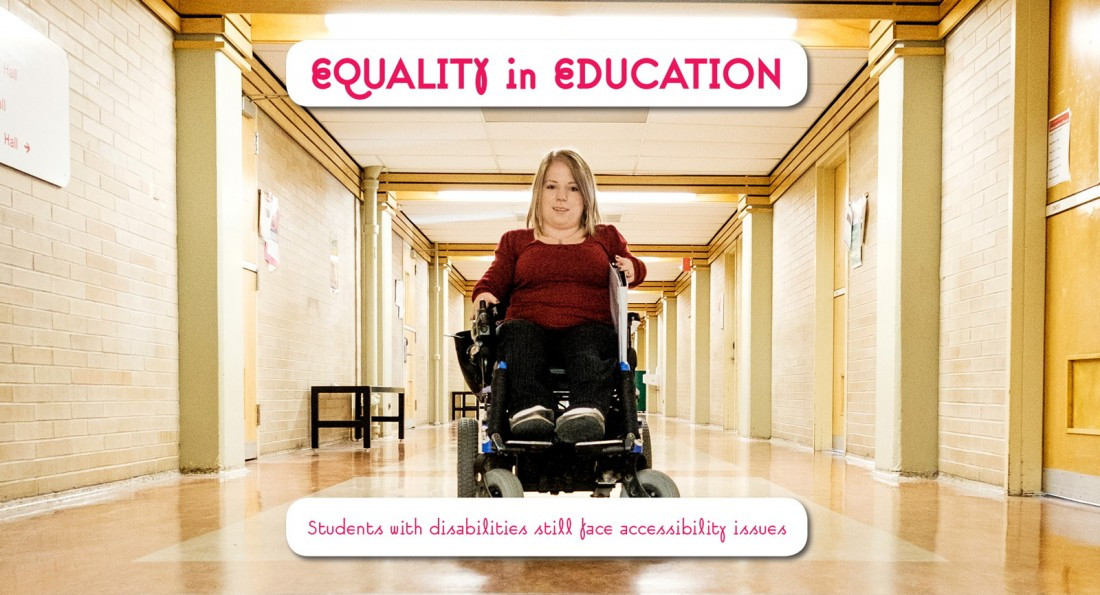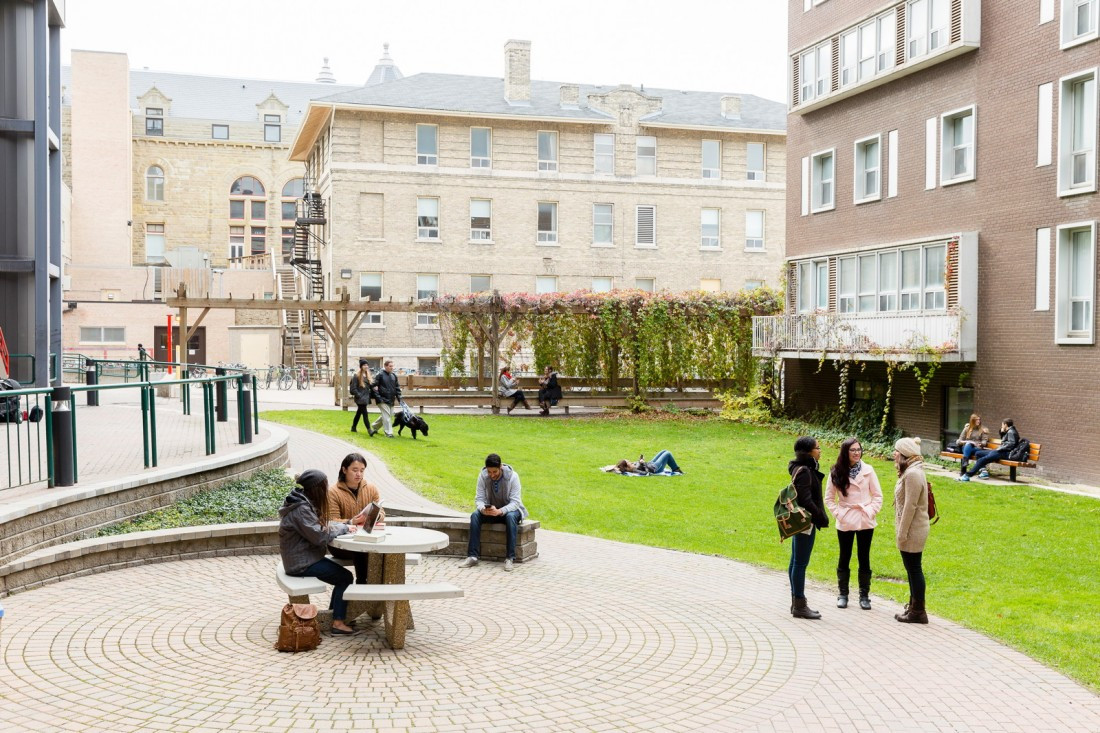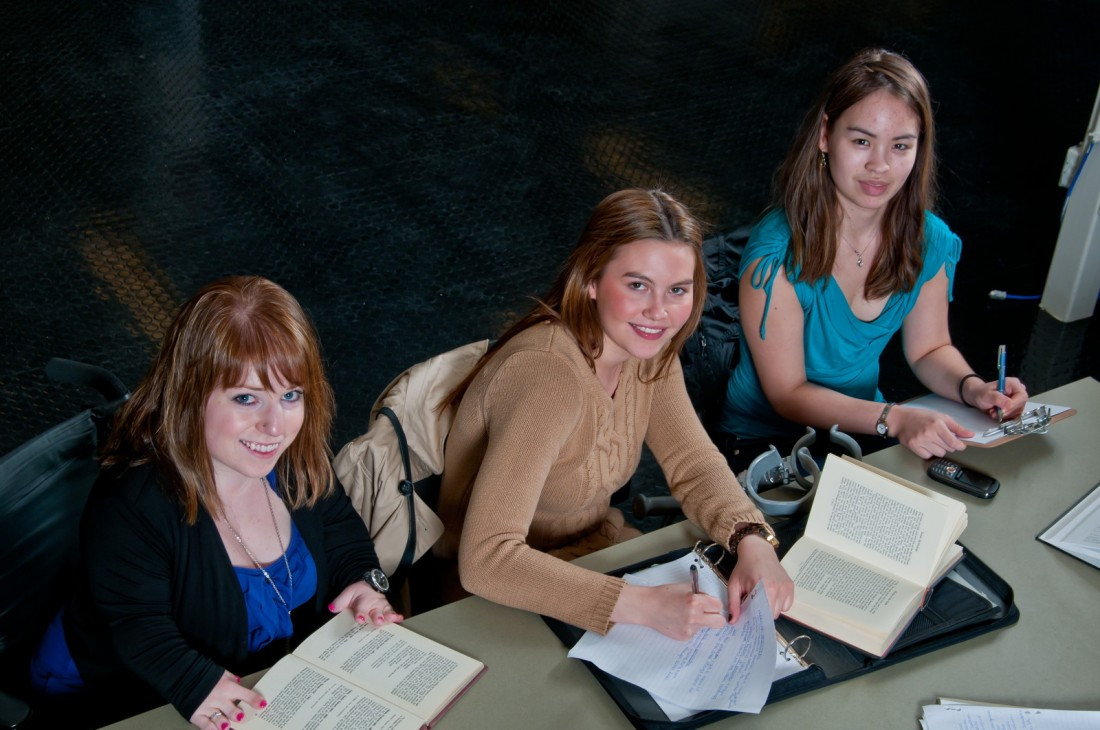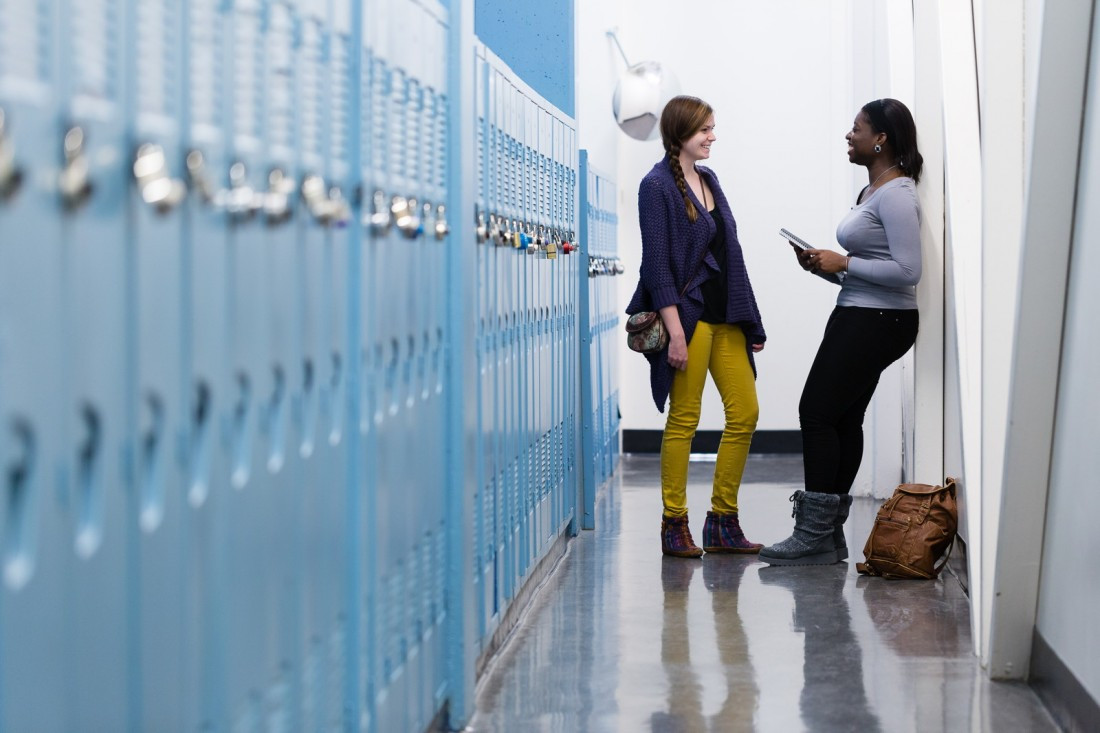Equality in education
Students with disabilities still face accessibility issues
Jade Ruchkall, a communications student at the University of Winnipeg. Photo by Daniel Crump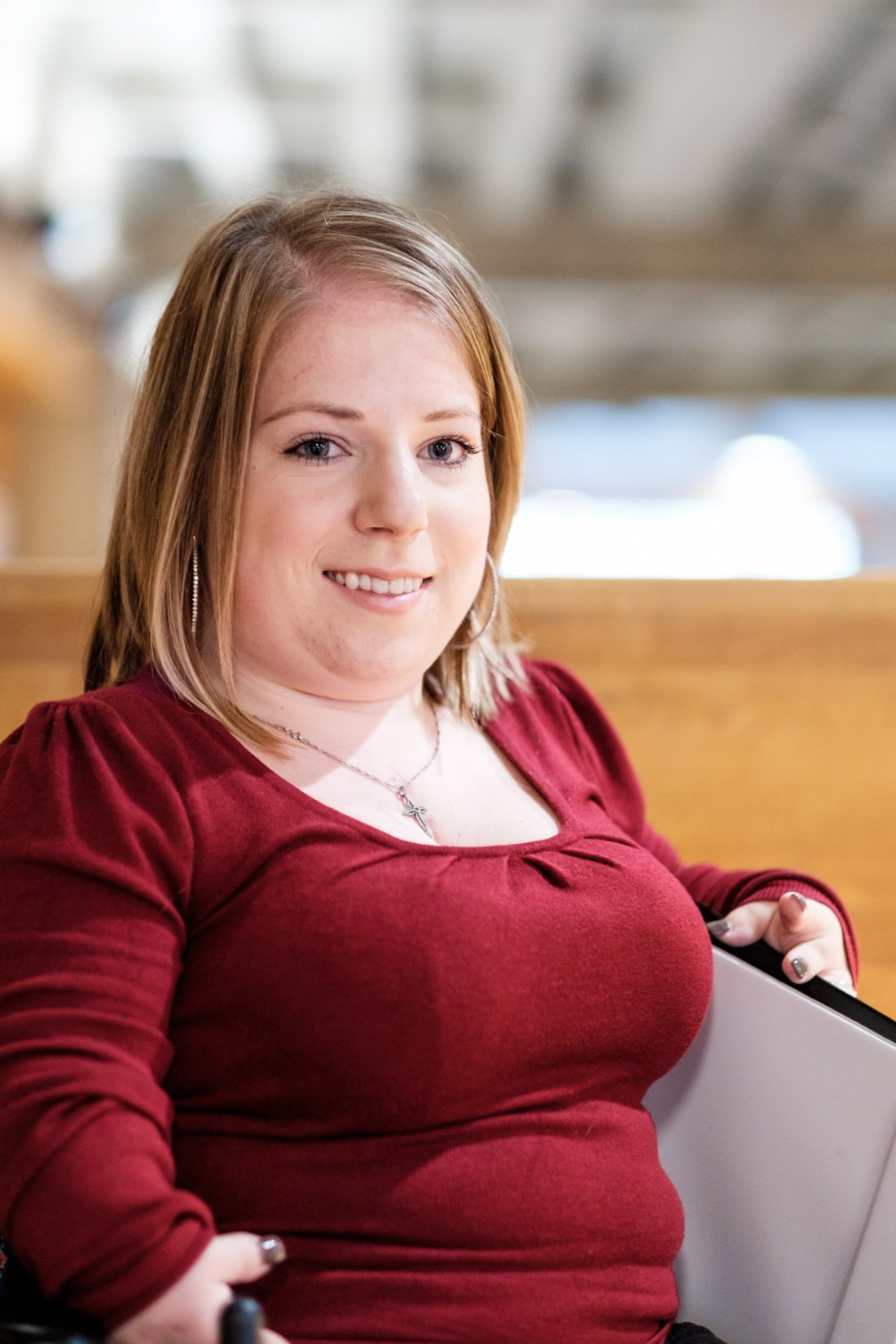
Society for Manitobans with Disabilities (SMD) works to help people get the tools they need to get around those barriers, including wheelchairs and accessible vehicles.
“A lot of the issues have to do with the environment,” SMD chief executive officer David Steen says. Architecture, parking and location of buildings and classrooms are common barriers to education for people with disabilities.
That was the case for Jade Ruchkall, a University of Winnipeg (U of W) student with a physical disability who planned to go into the creative communications program at Red River College (RRC). The college’s inability to help her get a parking space near the campus made that impossible.
“My identity as a person with a disability for the first time surfaced,” Ruchkall says. “I was a person with a disability. ‘Jade’ was just gone.”
She was told she was the first person to apply for the program who had a disability and a vehicle they were able to drive. Ruchkall felt she was too independent and she wasn’t willing to lose that independence.
“That to me is more important than any goal I have, because then I’m sacrificing who I am as a person,” Ruchkall says.
She knows other students with disabilities who have gone through the program and who have been accommodated without any issues, including a student who is blind.
Difficulty accessing adequate accommodations is not uncommon.
“The need for sign language interpreters, or note takers, or special transportation arrangements, or a variety of other things continue to be an issue,” Steen says. SMD helps people find ways around the barriers, although that’s not always possible.
Bram Keast, a University of Manitoba student who is hard of hearing, had no trouble getting computerized notetakers for his classes.
However, many of his small studio classes involved group discussions which he had difficulty following and would frequently give up on trying.
Supplied photo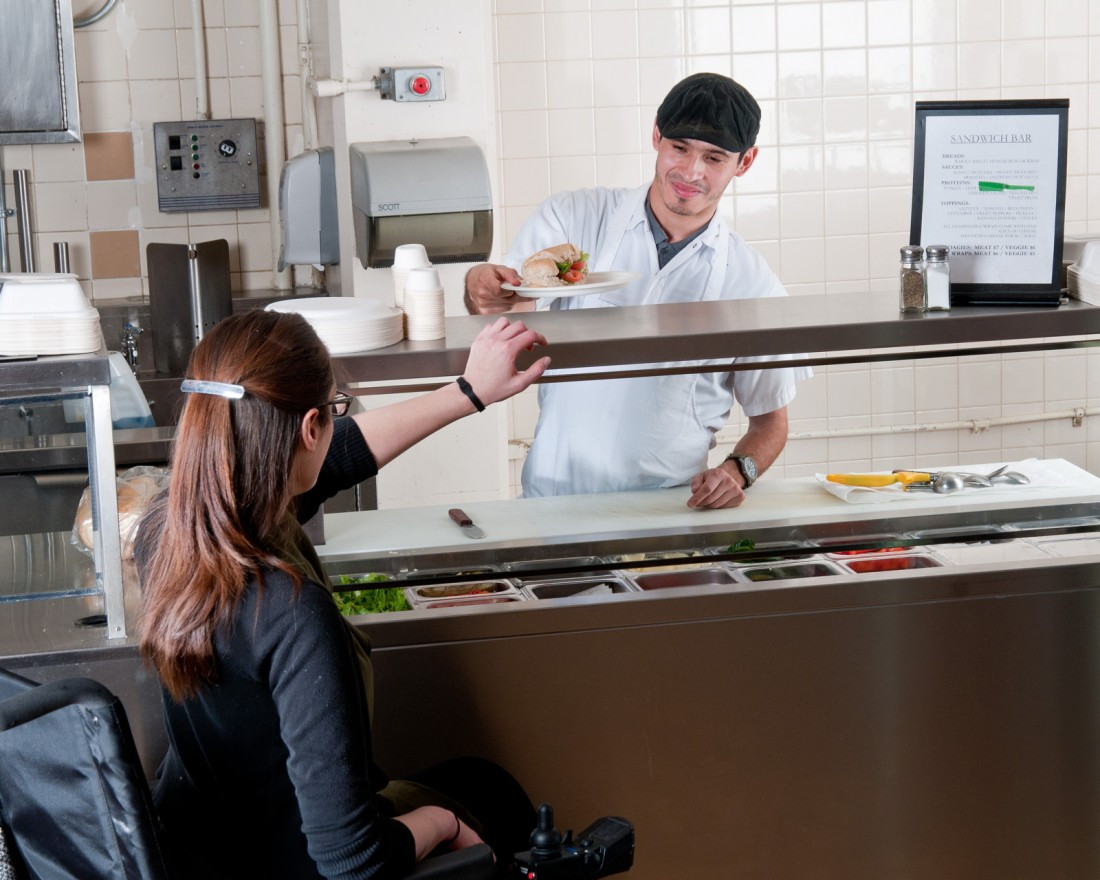
Catherine Mitchell, a 2012 graduate of U of W who is visually impaired, felt isolated when she was in university as well. She admits that this is partially because of her own insecurities surrounding her disabilities which made her reluctant to interact with other students.
When she started at U of W in 2003, the accommodations for her were insufficient.
“It was quite difficult to get the required readings in the appropriate format – large print, eText or CD-audio. Often times I would have the readings late so I would have to play a bit of catch up,” Mitchell says.
She realizes that Accessibility Services (then the Disability Resource Centre) had to manually scan text books to create a version that was accessible to her.
“Looking back, I realize how hard U of W staff in the Disability Resource Centre worked to make sure I got stuff as quickly as I did,” Mitchell says.
Lara Coombs, accessibility coordinator at Accessibility Services, says the centre assists students in implementing their accommodations and advocates with them when necessary.
“There have been a small number of instances where a specific accommodation has not been able to be provided for a variety of reasons,” Coombs says. In those cases, Accessibility Services brought together the student, instructor and faculty to discuss an alternative that worked for everyone.
After going back to U of W, Ruchkall got a lot of support from Accessibility Services.
“I was discriminated by a theatre prof,” Ruchkall says. “The prof just assumed I wouldn’t be able to do anything out of my chair.”
The professor told Ruchkall she could not take the course. When Ruchkall tried to explain that she has mobility out of her chair, the professor interrupted to tell her that she would have to fail her in the course.
Photo by Corey Aronec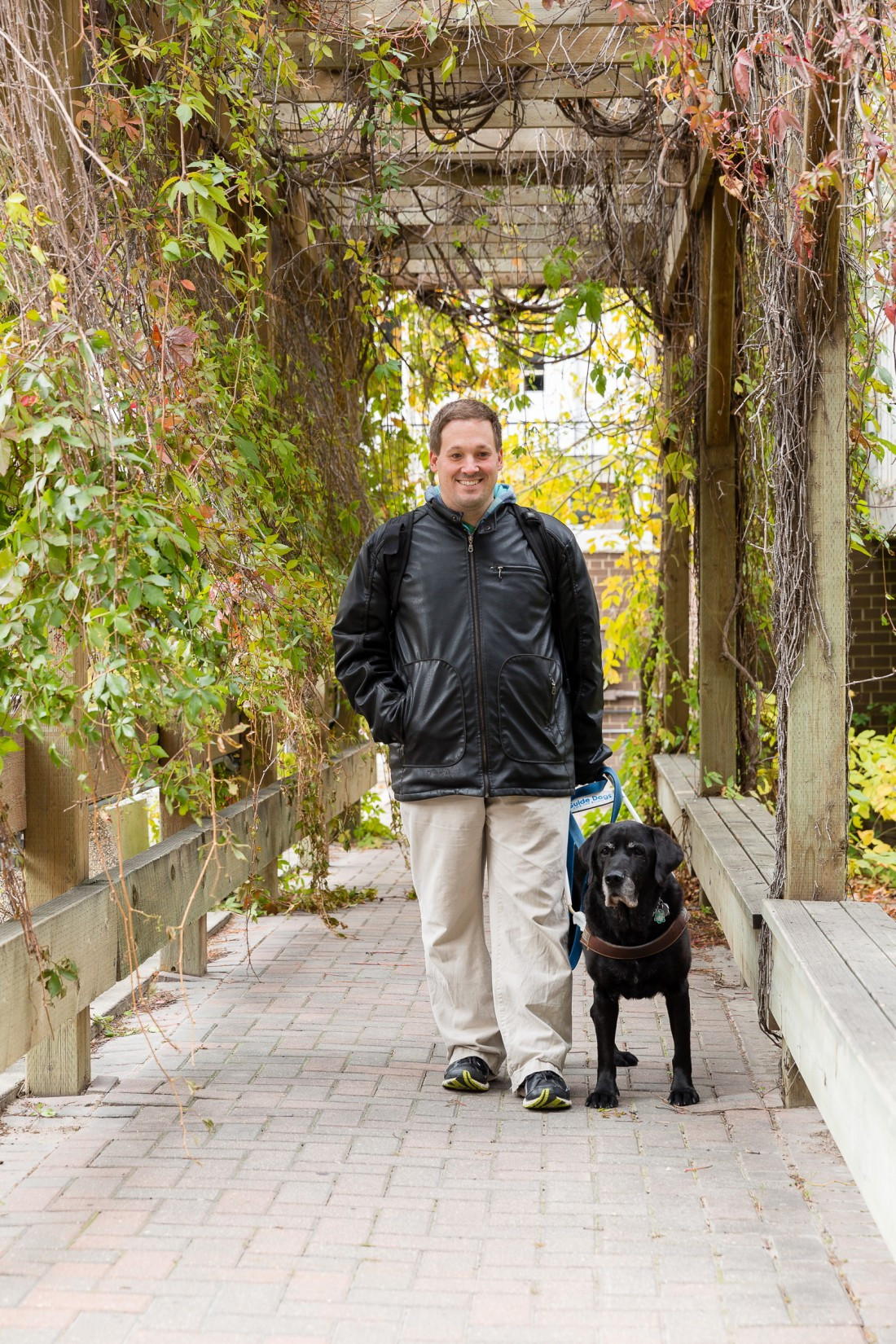
She made a complaint to the university which led to several meetings with the instructor, faculty and Accessibility Services.
“Basically, they told that prof that they needed to communicate better and I was told to choose another course,” Ruchkall says.
This created a lot of stress as Ruchkall had missed three weeks of classes.
“I kind of felt cheated,” Ruchkall says. “I should have been able to take that course. Absolutely.”
As discouraging as this was, it was the only instance of discrimination Ruchkall has experienced at U of W.
In fact, she’s had mostly positive experiences and has had all the support she needs from Accessibility Services.
“You feel like someone has your back on campus,” Ruchkall says.
SMD’s Steen attended U of W and says it worked for him as a student with a disability. At the time, he did not require a wheelchair to get around campus.
“I’ve been back since, now in a wheelchair, and it’s a terrible place,” Steen says. “U of W has not given enough attention to accessibility issues.”
It soon will have to.
Supplied photo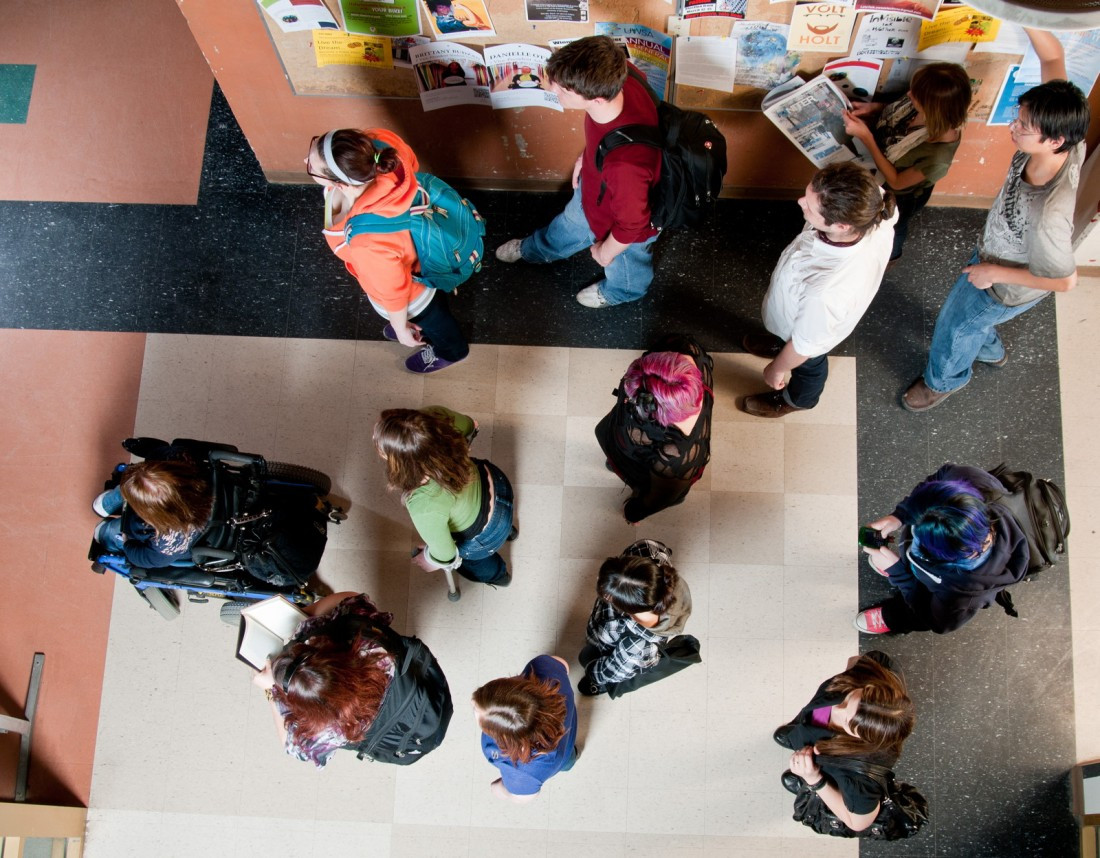
The plans must be created with the disability community and include a report identifying barriers, measures that will be taken to remove them and measures to assess the changes.
“UW is working towards implementing the new accessibility legislation, starting with the first Accessibility Standard for Customer Service,” Coombs says.
Everyone has a right to an education, Coombs says. As such, making education accessible to people with disabilities is important.
Steen has his doubts that the disability legislation will make significant changes, but says that it’s in everyone’s best interest that accessibility issues are addressed everywhere.
He says demographic shifts means there is a large aging population dealing with accessibility issues.
“The increasing incidence of disability as we age means that all of us, at one point or another, are either going to become disabled or know someone in our family who is,” Steen says.
Everyone will be impacted by disability at some point in their life, which includes accessibility policies.
“Diversity and inclusion benefits not only people with disabilities and health conditions but it benefits society as a whole,” Coombs says.
Published in Volume 70, Number 5 of The Uniter (October 8, 2015)

